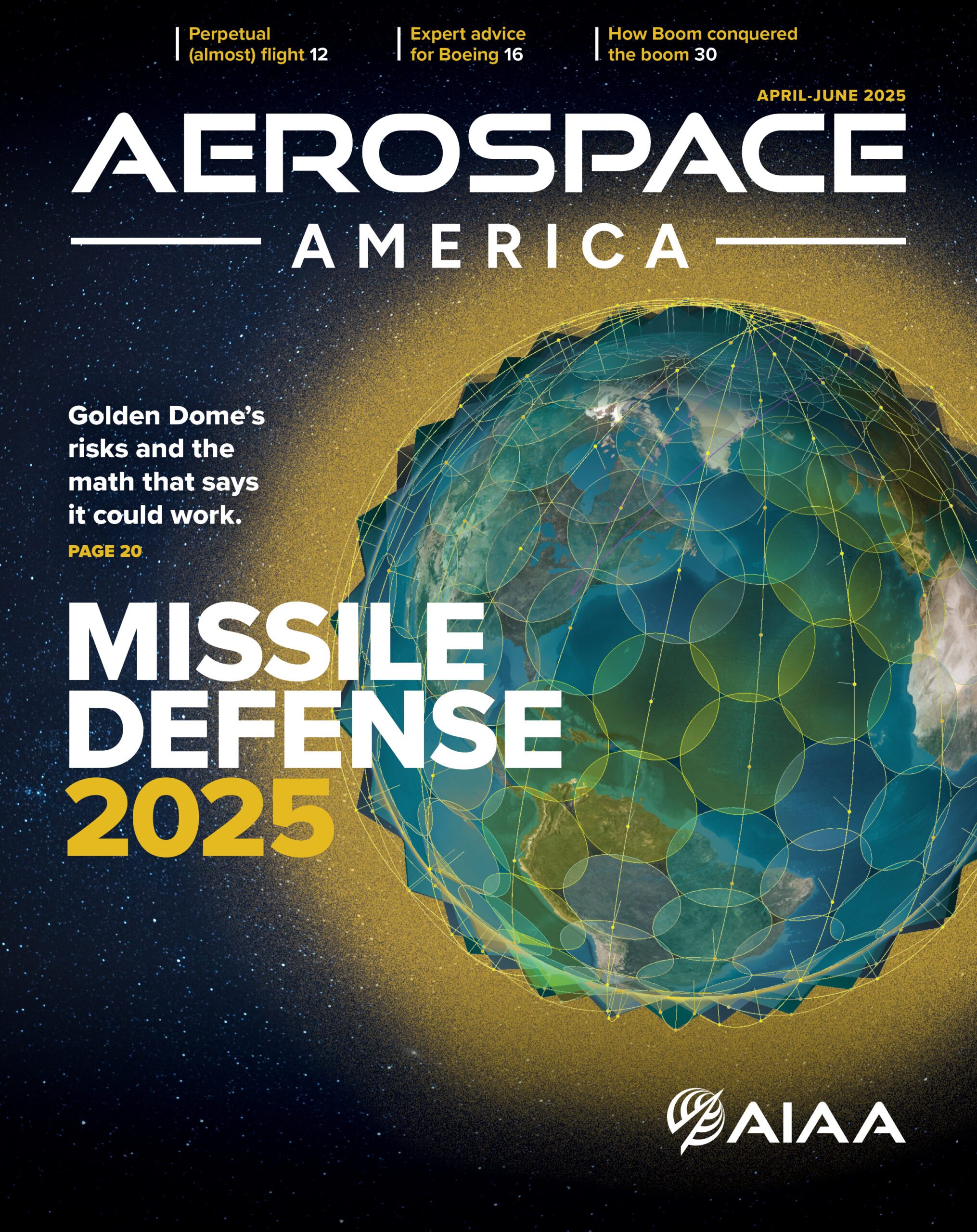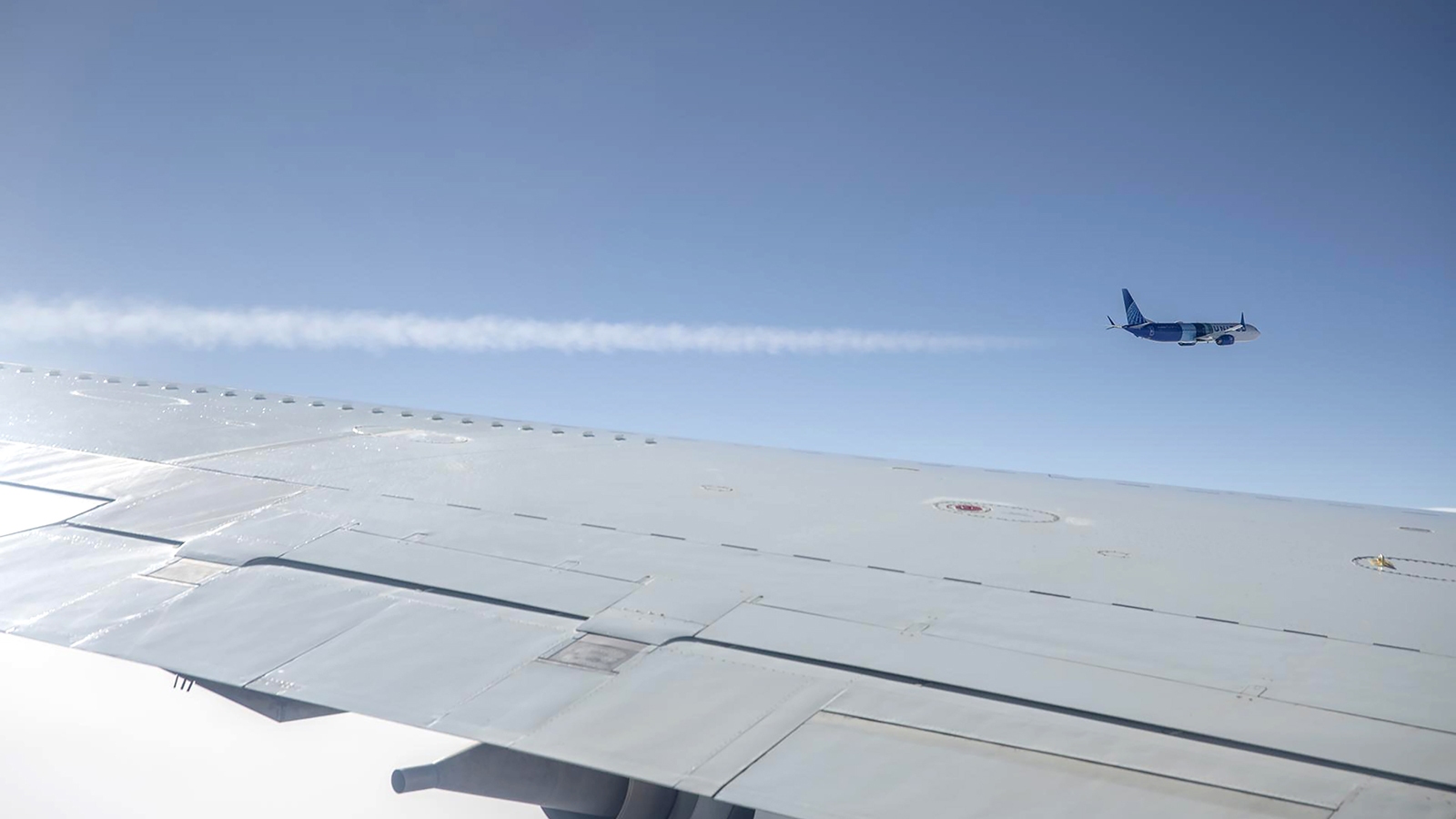Stay Up to Date
Submit your email address to receive the latest industry and Aerospace America news.
Conversations about the aviation industry’s environmental impact frequently revolve around carbon dioxide, but research in recent years has been increasingly focused on non-CO2 emissions — specifically, contrails.
These thin clouds of ice crystals, which form when warm soot particles and water vapor from jet engine combustion meet cold atmospheric air, are aviation’s largest contribution to atmospheric warming. However, scientists can’t precisely predict how much contrail ice will be created by a specific jet fuel and its ingredients— an uncertainty that a group of European scientists aims to address with tests that began in September.
Led by Airbus, the consortium of organizations participating in PACIFIC — short for Particle emissions, Air Quality and Climate Impact related to Fuel Composition and Engine Cycle — plan to conduct lab and ground tests with various formulations of conventional and sustainable aviation fuels (SAFs), to determine the types and volume of contrail ice crystals they will form at high altitudes.
To kick off the projects, scientists from the German Aerospace Research Center (DLR) gathered 10 fuel samples. Each is burned in a vertical methane flame while a sheet-like laser beam shines through the exhaust, illuminating tiny carbon soot particles that ice crystals could form around at high altitudes. A camera records the size and number of particles.
In future bench tests, the scientists plan to ignite the fuels in the burners of business jet and passenger jet engines to record the amount of soot and other molecules, like aerosol particles. By the middle of 2026, they intend to test three of the fuels in an A350 widebody at Airbus headquarters in Toulouse, France.
“You put the brakes on, you have a blast fence behind it and then you power up,” says Georg Eckel, head of alternative fuels at DLR’s combustion technology institute.
Meanwhile, University of Helsinki scientists will funnel the plane’s exhaust through a 50-meter-long tube into a home-refrigerator-sized chamber, dubbed PINCii for Portable Ice Nucleation Chamber 2. DLR will also sample the A350 exhaust from a “measurement van” parked behind the plane.
As aerosol molecules are sucked through the PINCii, they will be exposed to precise humidity and temperatures, down to minus 50 degrees Celsius, to simulate contrail-forming conditions in flight, says Jonathan Duplissy, a researcher at the Finland university. A laser will shine through the exhaust while an optical particle counter detects the 10-micron-sized particles via light deflection. The Helsinki researchers will also use a spectrometer to detect tiny “newborn” molecules — some of which are thousands of times smaller than aerosol particles —that can later clump together to become large enough for ice crystals to form around, Duplissy says.
Contrail-forming potential is among the factors that should be taken into account when determining the environmental impact of particular SAFs, says Thomas Viguier, an Airbus climate specialist.
“We want to be able to determine in the end if it’s worth revisiting the fuel specification, especially if there is eventually one day a SAF-specific fuel spec which would be different from the Jet A-1 current spec,” he says.
About Keith Button
Keith has written for C4ISR Journal and Hedge Fund Alert, where he broke news of the 2007 Bear Stearns hedge fund blowup that kicked off the global credit crisis. He is based in New York.
Related Posts
Stay Up to Date
Submit your email address to receive the latest industry and Aerospace America news.




